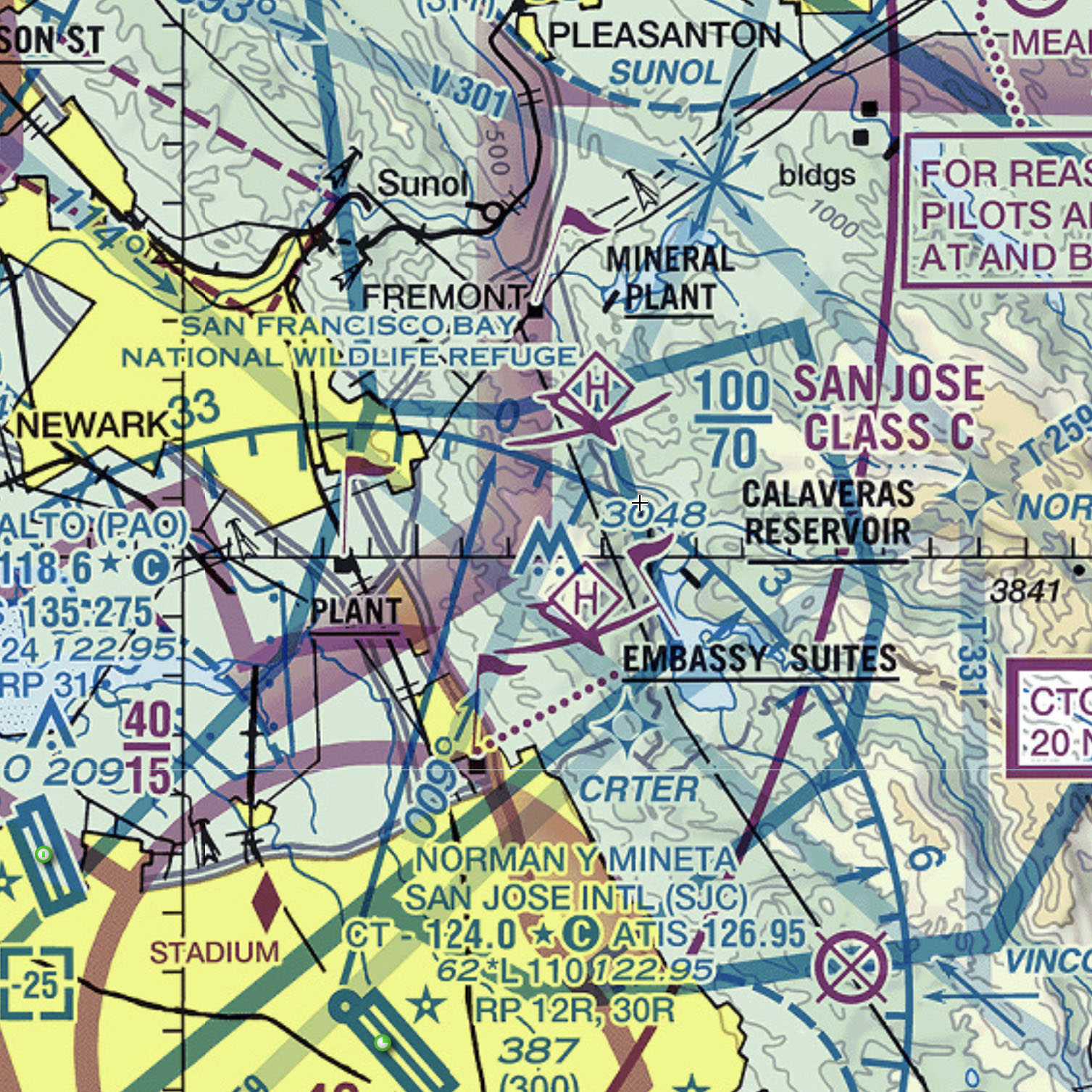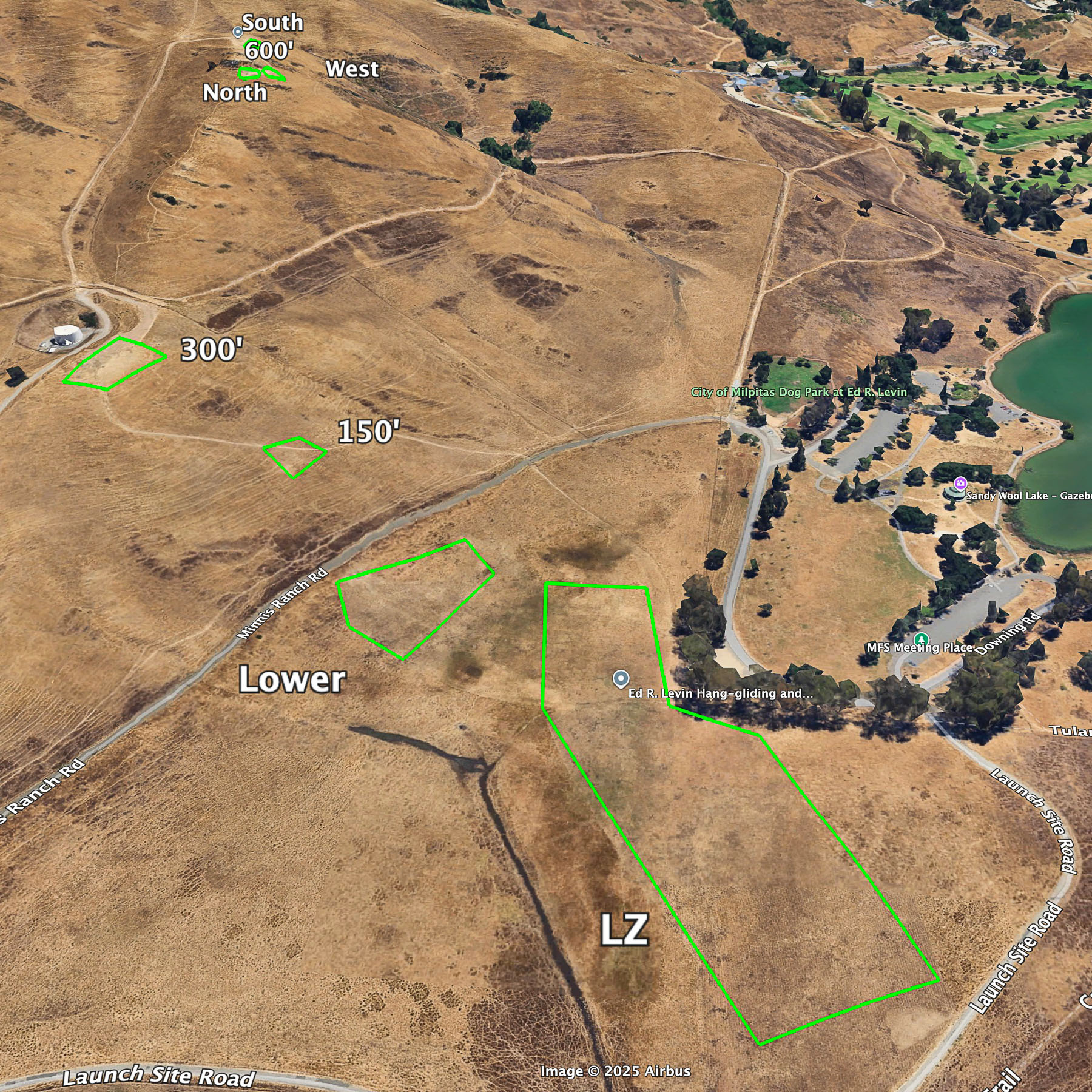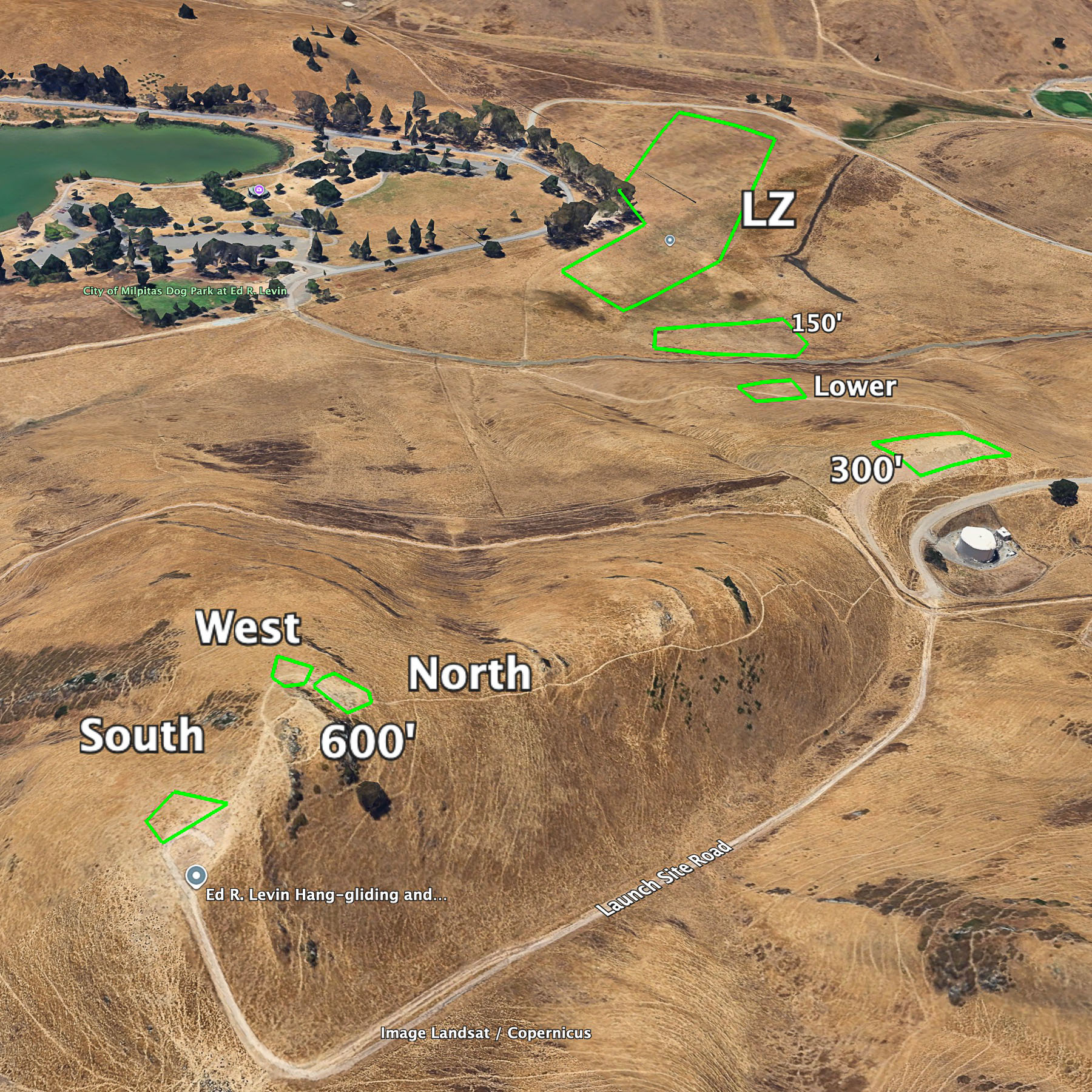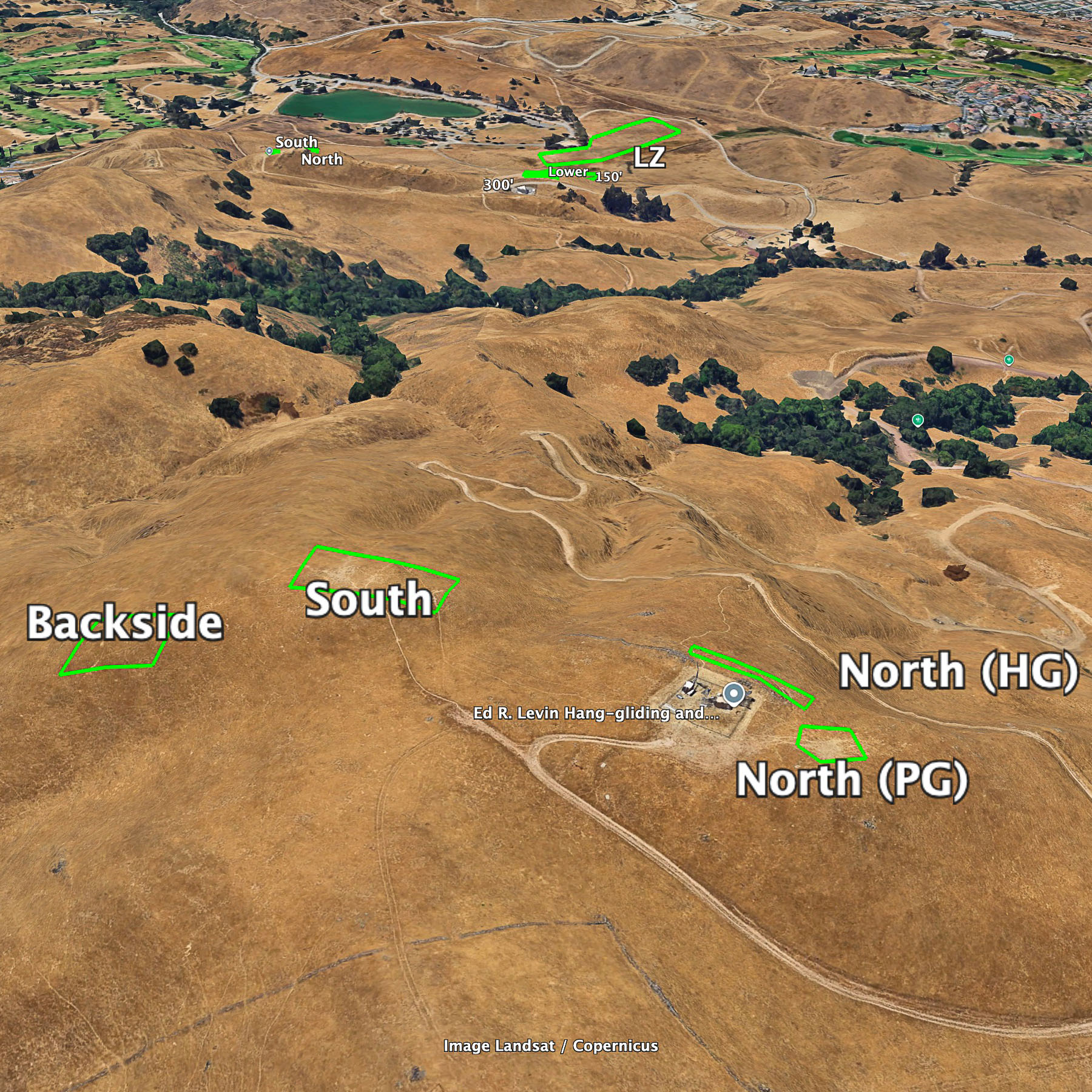Ed Levin
Milpitas, CA – Santa Clara County Parks
Last updated on December 28th, 2025 at 3:10 pm
Milpitas, CA – Santa Clara County Parks
Last updated on December 28th, 2025 at 3:10 pm
Ed Levin is open to pilots of all levels (students through H5/P5) in accordance with the rating and experience requirements outlined below. Each launch has specific minimum ratings. All pilots must review site procedures, complete required waivers, and meet all experience requirements before flying.


Launch elevations are expressed AGL relative to the LZ which is ~540′ MSL
Rating Requirements: P2/H2, or P0/H0 students with instructor
Winds: SE-W
HG & PG: 0-10mph, ideal 5mph
Rating Requirements: P2/H2, or P1/H1 with instructor
Winds: SSE-WSW
HG & PG: 0-10mph, ideal 5mph
Rating Requirements: P2/H2, or P1/H1 with instructor
Winds: SE-W
HG: 0-12mph, ideal 10mph
PG: 0-12mph, ideal 5mph
Glide ratio: 3:1

Rating Requirements: P3/H3, or P2/H2 with instructor, or P2/H2 with:
Winds: SE-W
HG: 0-15mph, ideal 10mph
PG: 0-15mph, ideal 8mph
Glide ratio: 3.5:1

Rating Requirements: P3/H3, or P2/H2 with instructor, or P2/H2 with:
Winds: SE-W
HG: 0-15mph, ideal 10mph
PG: 0-15mph, ideal 5mph
Glide ratio: 3.8:1
Rating Requirements: P3/H4, or P2/H3 with instructor, or P2/H3 with:
Winds: NE-SE
HG: 0-10mph, ideal 5mph
PG: 0-8mph, ideal 3mph
Glide ratio: 3.8:1

Pilots holding both HG and PG ratings (P2/H2+) may follow the requirements of the higher rating. Example: A H4/P2 may paraglide from the 600’ launch without a formal site intro.
Mt. Allison WX Station (closest but not always representative)
If you would like to instruct at Ed Levin, either non-commercially or commercially, fill out this Instructor Application form and contact the Ed Levin Site Chair for additional information about the process and requirements. Approved instructor list